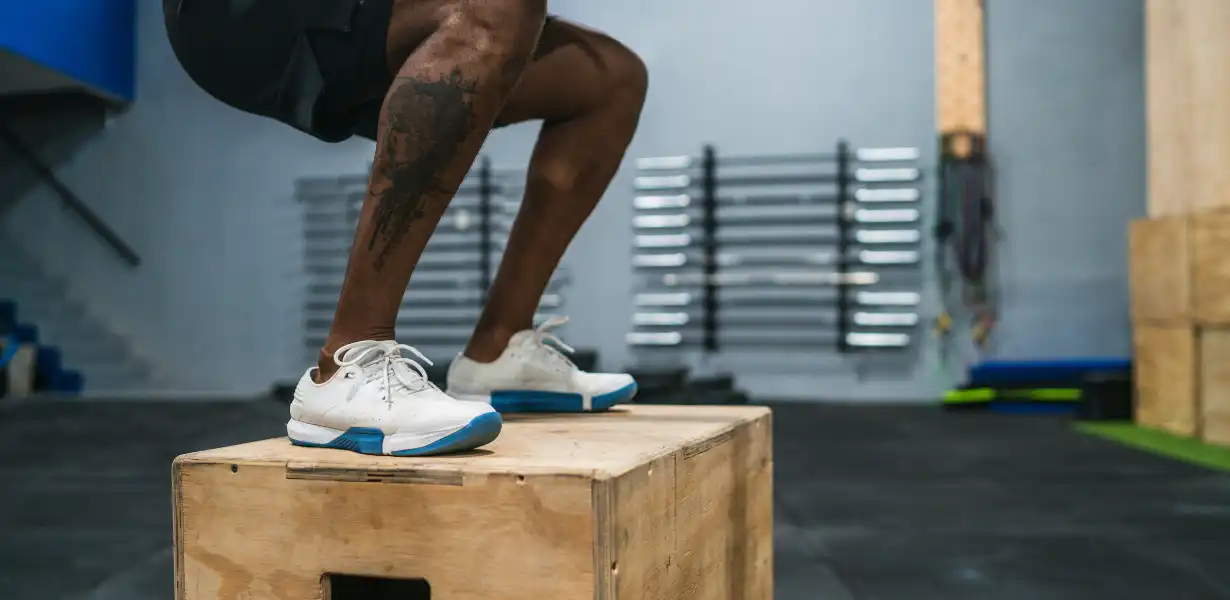When the final buzzer sounds and the rink shuts down for the summer, the game doesn’t stop — it just moves off the ice. For top-tier hockey players, the off-season isn’t about slowing down; it’s the season of growth, recovery, and serious off-season fitness.
This is when real progress takes shape — a chance to sharpen skills, build strength, and get mentally dialed in. Here’s how elite players approach training, mindset, and the grind when the ice is gone.
Dryland Training: The Foundation of Power
Off-ice strength and conditioning are the building blocks for explosive performance. Skating demands powerful legs, a strong core, and full-body balance, so the weight room becomes a second home in the off-season.
Top players focus on:
• Lower-body strength: squats, lunges, deadlifts.
• Core stability: planks, Russian twists, rotational med ball throws.
• Explosiveness: box jumps, sled pushes, and plyometrics.
Mobility and injury prevention are also emphasized — a mobile body is a durable one.
Stickhandling: Skill Doesn’t Take Summers Off
While the rink may be closed, your mitts should still be working overtime. Daily stickhandling drills help maintain touch and improve control.
Simple yet effective:
• Use a golf ball or stickhandling ball (like the SnabBoll with a Wraparound from ABHS) for increased difficulty.
• Practice toe drags, quick pulls, and tight-area moves.
• Stickhandle around obstacles to improve hand speed and vision.
Creating a routine — even 10-15 minutes a day — can produce big-time results by the fall.
Shooting Drills: Master Your Release
Off-season is the perfect opportunity to fine-tune your shot mechanics. Set up a net, shooting pad, or rebounder at home and go to work.
Focus areas:
• Quick-release wrist shots.
• One-timers with minimal setup.
• Snap shots off both feet.
• Shooting in stride and off-balance.
Repetition breeds confidence. Elite players log thousands of reps in the summer — every puck fired is one step closer to lighting the lamp come game time.
Skating Alternatives: Stay Light on Your Feet
If ice time is hard to come by, there are plenty of alternatives to keep your edge work sharp:
• Synthetic ice and slide boards replicate skating mechanics.
• Rollerblading develops stride technique and balance.
• Agility ladders and cone drills boost foot speed and direction changes.
The key is to maintain coordination and explosiveness so the transition back to the rink is seamless.
Conditioning: Outwork and Outlast
Endurance wins games. The third period — or overtime — is where conditioning pays off. Off-season training includes both aerobic and anaerobic work.
Try a mix of:
• Interval sprints (HIIT).
• Long-distance runs or cycling for base conditioning.
• Agility-based circuits.
Elite players train their engines to run hot — because outskating your competition in the final minutes is often the difference between a win and a loss.
Recovery and Mobility: Train Smart, Stay Healthy
Summer is also about healing. After a long season, players need to address any lingering soreness or overuse injuries. This is when recovery becomes a weapon.
Best practices include:
• Stretching and mobility work: target hips, groin, and shoulders.
• Foam rolling and massage to reduce muscle tension.
• Proper sleep and nutrition to fuel repair and performance.
The more you recover, the harder you can train. And staying injury-free is the real off-season win.
Mental Game: Sharpen the Hockey IQ
Off-season isn’t just about reps — it’s about reps with purpose. Top players study film, visualize plays, and work on their decision-making skills.
Some strategies include:
• Watching NHL games or past footage to analyze positioning.
• Playing small-area games to improve puck decisions.
• Practicing visualization — seeing yourself making plays and scoring.
Hockey is fast. Players who think the game at top speed separate themselves on the ice.
Skill Camps and Clinics: Learn from the Best
Many elite players attend specialized training camps during the summer. These sessions focus on specific skills like edge work, shooting mechanics, or defensive positioning.
What to look for:
• Small group settings.
• Experienced coaches.
• High-intensity skill development.
The best use these camps to address weaknesses or unlock new dimensions in their game.
Goal Setting and Tracking Progress
Success in the off-season starts with a plan. Set goals — then track the grind.
Examples:
• Increase squat weight by 20%.
• Shave 0.3 seconds off your 40-yard sprint.
• Hit 500 shots a day for 30 days.
Use journals, apps, or training calendars to monitor growth. Progress fuels motivation and keeps your eyes on the bigger goal: showing up in-season a whole new animal.
Mindset: Bring It Every Day
The real edge top players have? Mindset. They treat every off-season session like a game. There’s no coasting. No cutting corners. Just sweat, work, and pride.
Whether you’re in the gym, in the driveway, or in your garage, you’re building your next season with every rep.
When October hits, you’ll know who put in the work — and who took the summer off.
Final Shift
The off-season isn’t a break — it’s a mission. While others relax, top players train, recover, and level up every piece of their game. Want to skate into next season faster, stronger, and more confident? Then embrace the grind. The ice will return — make sure you’re ready to dominate it.
#OffSeasonGrind #HockeyLife #NoDaysOff #TrainLikeAPro #HockeyPlayersOnly #NextSeasonStartsNow #DrylandTraining #StickhandlingSkills #HockeyMindset #BuildYourGame

